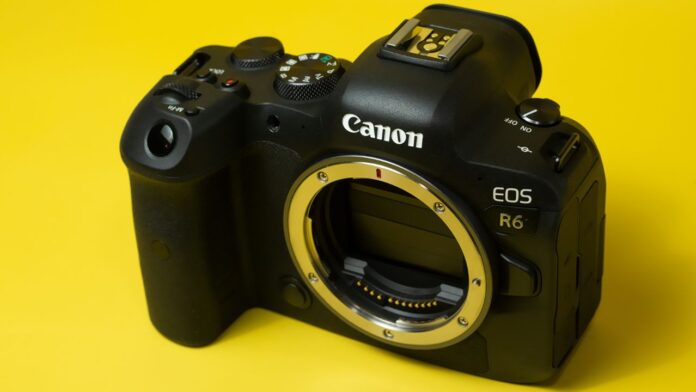Wildlife photography is challenging, albeit rewarding, and requires not only skill and patience but also the right camera equipment. With the rise of mirrorless cameras in recent years, many photographers are wondering whether these smaller, lighter digital cameras can deliver the same quality and performance as traditional digital SLRs.
If you’re considering getting a mirrorless camera for photographing in the wild, you may be wondering whether it’s a good choice for capturing the wonders of natural beauty and some of its elusive moments. In this article, we’ll compare digital mirrorless cameras to digital SLRs and weigh the benefits and drawbacks of each. So, let’s dive in!
How mirrorless cameras differ from traditional digital SLRs
Mirrorless cameras differ from traditional digital SLR cameras in several ways. The most obvious one is the lack of a mechanical mirror that reflects light from the lens to the viewfinder. Instead, mirrorless cameras use an electronic viewfinder (EVF) or the rear LCD screen to display the image. Additionally, these cameras often come with smaller sensors than digital SLR cameras, which can affect image quality in low light conditions or at higher ISO settings.
Another big difference between these two camera technologies is the autofocus system. Mirrorless cameras often use a contrast-detection autofocus (AF) system, whereas digital SLR cameras use a phase-detection AF system. In general, phase-detection AF is faster and more accurate, especially in low light or with moving subjects. However, some mirrorless cameras now come with a hybrid autofocus system that combines both contrast and phase detection AF systems for improved overall performance.
Digital SLRs vs Mirrorless
So, which camera is better for wildlife photography? The answer will depend on several factors, including your shooting style, budget, and personal preferences. Here are some of the pros and cons of each:
Digital SLR cameras
Pros
- It comes with a larger image sensor, such as full-frame, that provides better image quality in low light or at higher ISO settings.
- The phase-detection autofocus system used in a digital SLR is typically faster and more accurate, especially with moving subjects.
- It has a longer battery life, allowing for more shooting time without the need to change batteries as frequently.
- A wide selection of camera lenses and accessories is available
- The optical viewfinder provides a clear, lag-free view of the subject
Cons
- Digital SLR cameras have a larger, bulkier camera body, making them more difficult to handle in the field for long periods of time.
- The loud shutter sound can startle wildlife, especially if you’re photographing shy or skittish animals.
- You can’t preview of the final image until after it’s been taken
Mirrorless cameras
Pros
- Their smaller, lighter, and more compact size makes them ideal for longer photography assignments where weight and space are limited.
- It has a ‘silent shooting mode’ that allows you to photograph wildlife without disturbing it or in areas where loud noises are prohibited.
- The electronic viewfinder (EVF) shows a preview of the final image, with exposure and white balance adjustments visible in real time. This can help you get the shot right the first time without having to take multiple test shots.
- You can use almost all types of digital SLR camera lenses with an adapter
- It often comes with advanced features like in-body stabilisation and 4K or even 8K video recording.
Cons
- Mirrorless cameras are lighter, smaller, and more portable, which also means they can’t accommodate large battery packs in the camera body. This trade off can mean more frequent battery changes in the field, which can be inconvenient if you’re in the middle of a shoot.
- EVF can lag or freeze under heavy load.
- While mirrorless cameras are able to use digital SLR camera lenses with an adapter, some camera lens features may be incompatible.

Best mirrorless cameras for wildlife photography
If you’ve decided to go with a mirrorless camera for wildlife photography, here are some of the best options on the market:
Canon EOS R7
This EOS R powered hybrid mirrorless camera is portable, responsive, and powerful, making it perfect for both professionals and amateurs. The Canon EOS R7 features a 32.5-megapixel APS-C sensor that provides the ideal balance of resolution, speed, and low-light performance.
Sony Alpha 9 II
The Sony A9 II is a full-frame mirrorless camera with a 24.2-megapixel sensor and a hybrid AF system with 693 phase-detection AF points. It also comes with a 20 fps continuous shooting mode and 4K video recording.
Fujifilm X-T4
Another excellent option is the Fujifilm X-T4, an APS-C mirrorless camera with a 26.1-megapixel sensor and a hybrid AF system with 425 phase-detection AF points. It also has in-body stabilisation and can record 4K video.
Recommended accessories for wildlife photography
Some camera accessories can be essential to making your wildlife photography experience more comfortable and productive. Here are some mirrorless camera accessories worth considering:
- A sturdy tripod for stabilising your camera when photographing in uneven terrain.
- A monopod for better support and stability when you need to move quickly or change positions frequently.
- A battery grip for a more comfortable grip.
- A rain cover for waterproofing and shooting in wet conditions.
- High-quality memory cards with fast write and read speeds to capture fast action and record or play 4K video.
Final words
All in all, mirrorless cameras can be a good choice for wildlife photography, especially if you value a smaller, lighter camera body with the ability to shoot silently. But ultimately, the choice between mirrorless and digital SLR cameras often comes down to your personal preferences and shooting style.
By considering the factors discussed in this article, you can make an informed decision about whether a mirrorless camera is right for your wildlife photography needs.
We hope you found this post helpful. Continue reading more posts on our blog.

